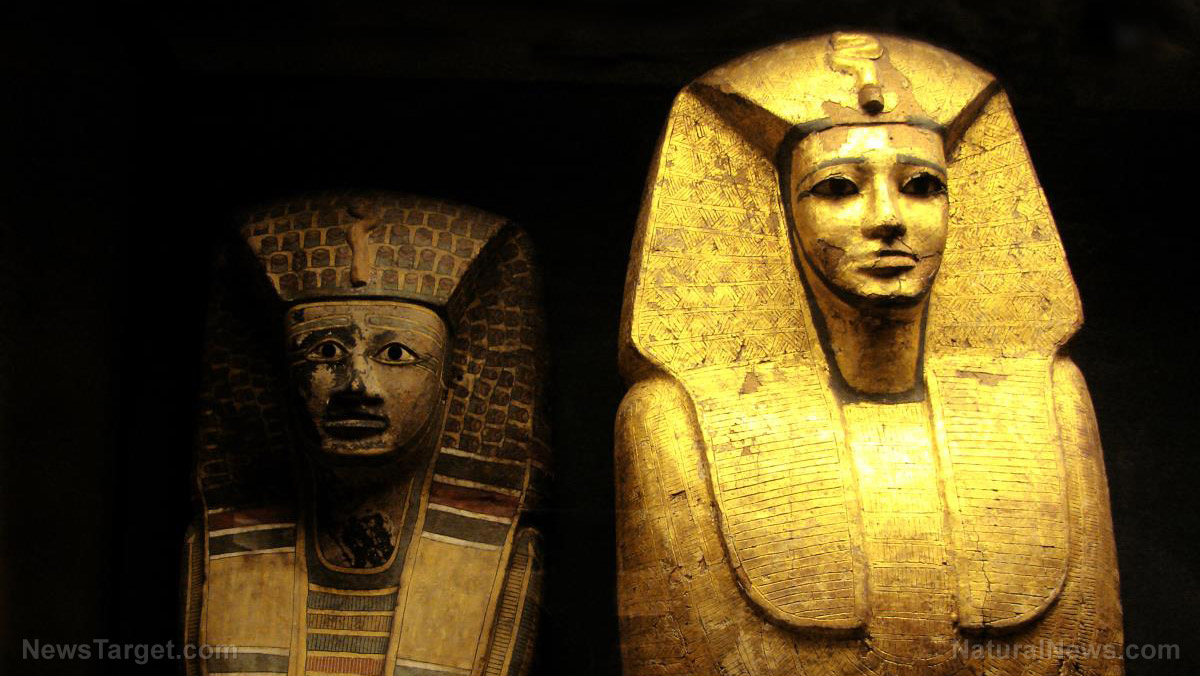
The Year 2022 has yielded several amazing archeological discoveries. Here are some them:
Portraits of two Egyptian mummies
The portraits of two mummies were discovered by Egyptian archeologists at the Gerza excavation site in Fayoum, Egypt in early December. (Related: Unlocking the secrets of Ancient Egypt: Archaeologists uncover dozens of mummified animals in the Tomb of Tutu.)
Known as "Fayoum portraits" the two full-color artworks are the first of their kind to be found in over a century.
According to the Egyptian Ministry of Tourism and Antiquities, they are among the "most important archaeological discoveries that were found during the current season."
Rare pink sarcophagus
Last September, a rare pink sarcophagus was found by archaeologists in Cairo's famous Saqqara necropolis, which is also known as the "City of the Dead."
It was discovered near the pyramid of King Unas.
The granite coffin, which dates back 3,300 years, is said to have belonged to a notable politician who lived during the reign of King Ramses II.
Golden mummy tongues
Last November, researchers discovered ancient mummies with golden tongues placed in their mouths.
The mummies were found in the Quweisna necropolis located at Menoufiya governorate in the central Nile Delta northwest of Cairo.
Oldest African dinosaur fossils
Fossils of the oldest African dinosaur ever found were discovered in Zimbabwe last September.
Known as Mbiresaurus raathi, a group of international researchers found its fossils at the Pebbly Arkose Formation in northern Zimbabwe.
Human knowledge is under attack! Governments and powerful corporations are using censorship to wipe out humanity's knowledge base about nutrition, herbs, self-reliance, natural immunity, food production, preparedness and much more. We are preserving human knowledge using AI technology while building the infrastructure of human freedom. Speak freely without censorship at the new decentralized, blockchain-power Brighteon.io. Explore our free, downloadable generative AI tools at Brighteon.AI. Support our efforts to build the infrastructure of human freedom by shopping at HealthRangerStore.com, featuring lab-tested, certified organic, non-GMO foods and nutritional solutions.
The dinosaur's first name "Mbire" was taken from the Shona dynasty that once ruled the region while the last name was in honor of Michael Raath, who helped discover the first fossils in the region.
Mbiresaurus raathi is classified as a sauropodomorph, making it a predecessor of the long-necked sauropods.
Rare dinosaur fossil with preserved meal
Researchers found the remains of a small mammal in the fossil of a Microraptor in early December.
Microraptors are small four-winged dinosaurs that roamed Earth during the early Cretaceous Jiufotang Formation around 125 million years ago.
Fossils of Microraptors had been found before, but this particular discovery shed light on their diet.
The discovery came as a real surprise, according to vertebrate paleontologist Hans Larsson from McGill University.
"At first, I couldn't believe it. There was a tiny rodent-like mammal foot about a centimeter long, perfectly preserved inside a Microraptor skeleton. These finds are the only solid evidence we have about the food consumption of these long-extinct animals – and they are exceptionally rare," Larsson said.
Oldest sentence
The oldest sentence was deciphered in 2022, although it was found five years earlier.
The sentence shows 17 Canaanite letters written in an antiquated format, similar to the first stage of the invention of the alphabet.
Aztec objects and offerings from Templo Mayor
Excavations carried out by archaeologists from the Instituto Nacional de Antropología e Historia at the foot of Templo Mayor in the the Aztec capital city of Tenochtitlan uncovered ritual deposits containing over 2,500 wooden objects.
The finely carved objects, which consist of scepters, ear flares, nose and finger rings, and miniature masks and weapons, were buried between 1486 and 1502 as ritual offerings. They are believed to have been deposited by priests for the Aztec gods.
Follow Artifacts.news for more news about archaeological discoveries.
Watch the video below to know more about the 2,000-year-old mummy with the golden tongue near the tomb of Osiris.
This video is from the Kim Osbøl - Copenhagen Denmark channel on Brighteon.com.
More related stories:
Ancient Maya civilization purified water using filtration system made of crystal minerals.
Experts unearth unique leather scale armor at 2,500-year-old Chinese burial site.
Sources include:
Please contact us for more information.




















